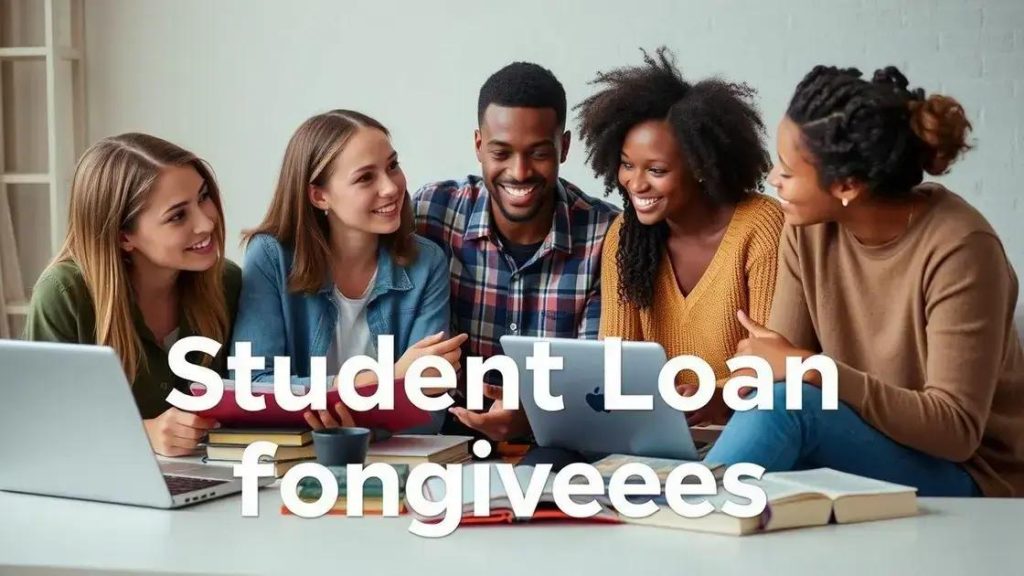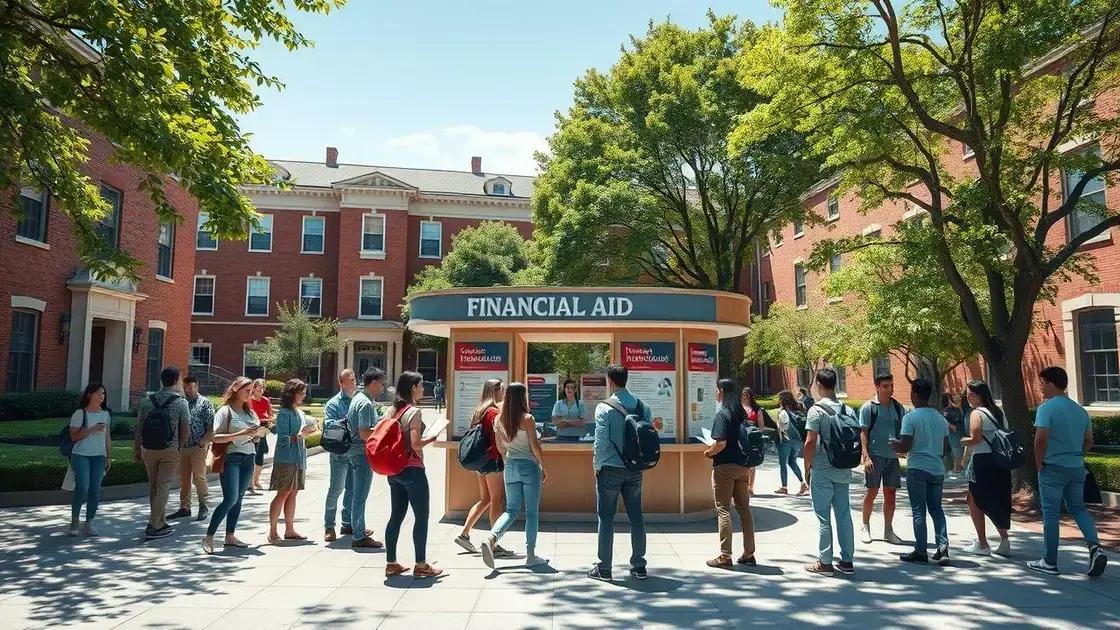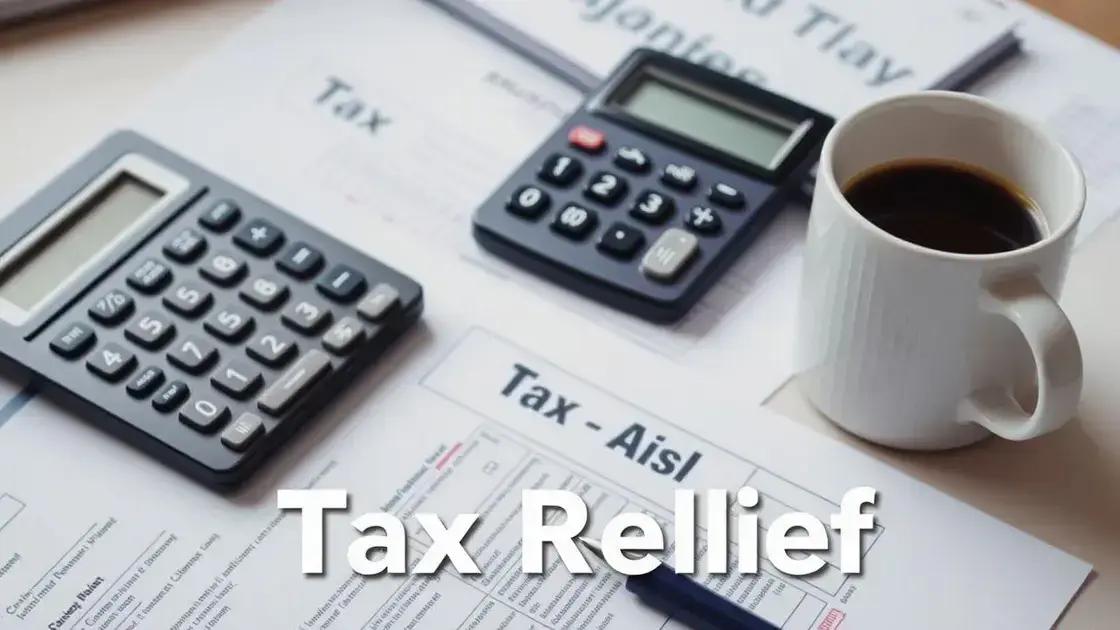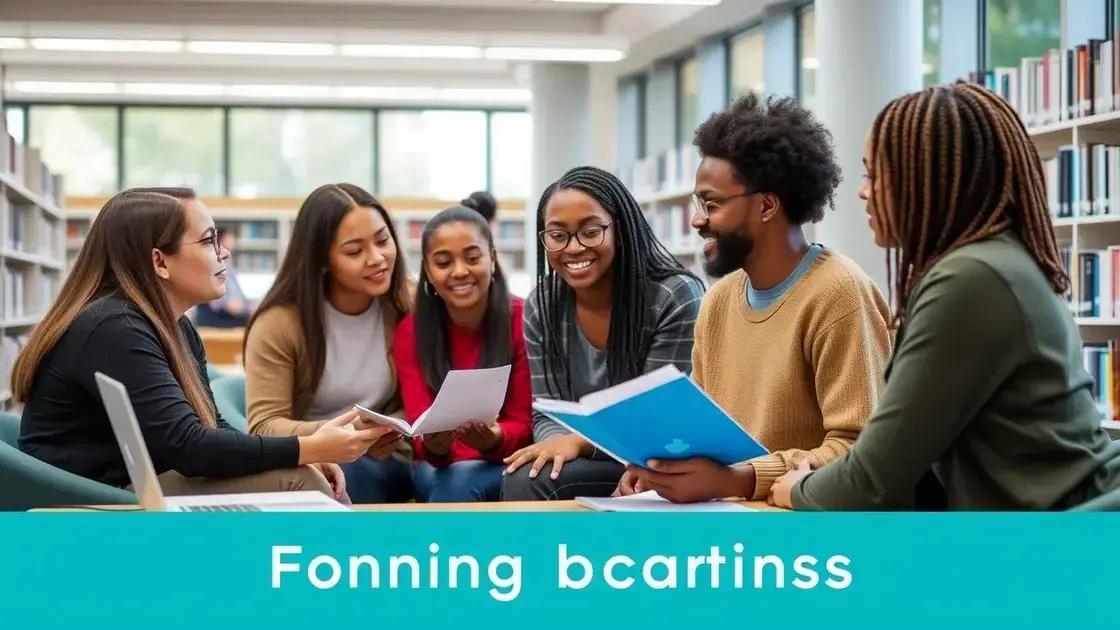Student loan forgiveness: what you need to know now

Anúncios
Student loan forgiveness allows eligible borrowers to have some or all of their federal student loans canceled, freeing them from the responsibility of repayment and improving their financial future.
Student loan forgiveness can feel like a lifeline for many graduates overwhelmed by debt. Have you ever wondered how these programs work and who qualifies? Let’s break it down.
Anúncios
Understanding student loan forgiveness programs
Understanding student loan forgiveness programs can help borrowers take advantage of potential benefits. These programs are designed to assist those struggling with loan repayments. They offer various forms of relief, significantly impacting a borrower’s financial situation.
Types of student loan forgiveness programs
There are different types of forgiveness programs available to borrowers. Each program has its own eligibility requirements and benefits.
- Public Service Loan Forgiveness (PSLF): This program forgives loans for those who work in qualifying public service jobs after making 120 qualifying payments.
- Teacher Loan Forgiveness: Teachers in low-income schools can receive forgiveness for a portion of their loans if they meet specific criteria.
- Income-Driven Repayment (IDR) Forgiveness: After 20 or 25 years of payments under an IDR plan, remaining balances may be forgiven.
In addition to the programs mentioned, some states offer their own loan forgiveness initiatives. Each state has different criteria, and often, the forgiveness is tied to specific professions like health care or teaching. This allows users to explore options that can ease their burdens based on their career paths.
Anúncios
How to determine eligibility
Finding out if you’re eligible for a forgiveness program can feel overwhelming. However, looking into the requirements of each program is vital. Most commonly, eligibility factors include your employment status, the type of loans you have, and your repayment history.
Borrowers often benefit from reaching out to loan servicers or using online tools to help navigate their eligibility. It’s essential to verify details, as rules can change or be updated over time, ensuring that you stay informed and prepared.
Eligibility criteria for loan forgiveness
Eligibility criteria for loan forgiveness can seem complicated, but understanding them is key to benefiting from these programs. Each program has unique requirements that borrowers must meet to qualify.
General eligibility requirements
Most forgiveness programs require borrowers to fulfill specific conditions. Common factors include the type of loan, repayment plan, and employment status. For instance, federal loans are often eligible, while private loans usually are not.
- Loan type: Federal Direct Loans are typically required for forgiveness eligibility.
- Payment plan: Borrowers may need to be on an income-driven repayment plan.
- Employment: Many programs require employment in a qualifying field or sector.
In addition, borrowers must demonstrate good standing on their loans. This means having made the required number of payments without default. Meeting these criteria is crucial to avoid misunderstandings and ensure a smoother application process.
Specific program criteria
Each forgiveness program has specific eligibility criteria that vary. For example, the Public Service Loan Forgiveness program requires 120 qualifying payments while working in a full-time public service job. More details specific to each program can provide clearer guidance to applicants.
It’s also important to review any state-specific programs that may offer additional criteria or benefits. Many states have their own loan forgiveness options, often tailored to professions like teaching or healthcare. Researching these can provide valuable opportunities for borrowers seeking assistance.
Step-by-step application process

The application process for student loan forgiveness can feel overwhelming at first. However, breaking it down into clear steps can make it manageable. Following these steps can help ensure that applicants know what to expect and how to complete each part.
Step 1: Determine eligibility
First, borrowers should determine their eligibility for loan forgiveness. This involves reviewing their loan type, repayment plan, and employment status. Checking the specific requirements for the forgiveness program is essential.
Step 2: Gather necessary documents
After confirming eligibility, the next step is gathering the required documents. This may include:
- Proof of employment: Documentation of employment, especially if working in a qualifying field.
- Loan information: Details about the loans being considered for forgiveness.
- Payment history: Records showing the number of payments made and the repayment plan.
Having all necessary information ready can streamline the application process and minimize delays.
Step 3: Complete the application form
The next step is completing the required application form. Each forgiveness program has its specific form, which must be filled out accurately. Mistakes on the form can lead to rejection or delays, so it’s crucial to double-check all entries.
Step 4: Submit the application
Once the application form is complete, send it to the appropriate entity. Make sure to keep copies of everything submitted and track the submission date. This can be important in case follow-up is needed.
Step 5: Follow up
After submission, it’s wise to follow up with the loan servicer to confirm receipt of the application. This ensures that everything is in order and allows applicants to ask about the expected timeline for a decision.
Navigating the application process requires attention and care, but taking these steps can increase the likelihood of a successful outcome.
Common misconceptions about student loan forgiveness
Many people hold misconceptions about student loan forgiveness, which can lead to confusion or missed opportunities. Understanding these myths is important for any borrower considering forgiveness options.
Myth 1: All loans are eligible
One common misconception is that all student loans qualify for forgiveness. In truth, only federal loans, such as Direct Loans, are typically eligible. Private loans generally do not qualify for forgiveness programs.
Myth 2: You don’t have to make any payments
Another major myth is that forgiveness programs mean borrowers do not have to make payments. While some programs forgive loans after a certain number of payments, borrowers must still make those payments regularly throughout the repayment period.
- Public Service Loan Forgiveness requires 120 qualifying payments.
- Income-Driven Repayment plans necessitate regular monthly payments for 20 to 25 years.
- Understanding your specific repayment timeline is crucial for success.
This can lead to frustration if borrowers expect full forgiveness without fulfilling these obligations.
Myth 3: Forgiveness is automatic
Many believe that once they meet the eligibility criteria, forgiveness is automatic. However, borrowers must actively apply for forgiveness and ensure their loans are in good standing to receive this benefit.
Misunderstanding these requirements can cause delays or denials in applications. Properly managing loans and keeping track of required documentation is essential.
Myth 4: You can only apply once
Some borrowers think they can only apply for forgiveness a single time. In reality, multiple programs may exist, and borrowers can often shift between these programs as their circumstances change. Exploring all available options can be beneficial.
Clearing up these misconceptions allows borrowers to make informed decisions about their student loans. By understanding the truth behind forgiveness programs, borrowers can effectively navigate their options and maximize their chances for relief.
The financial impact of forgiveness on your future
The financial impact of forgiveness on your future can be significant. Understanding how loan forgiveness can alter your financial landscape is crucial for borrowers contemplating their options. For many, forgiveness can lead to more disposable income and better financial health.
Increased disposable income
When student loans are forgiven, borrowers often experience a noticeable increase in disposable income. Without monthly loan payments, individuals can redirect their finances toward savings, investments, or other priorities.
This shift can help in achieving financial goals faster, such as:
- Saving for retirement: Increased funds can be allocated to retirement accounts.
- Investing in education: Individuals may choose to further their education or skills, improving career prospects.
- Pursuing home ownership: Without the burdens of debt, borrowers may find it easier to qualify for a mortgage.
Long-term financial stability
Forgiveness can also contribute to long-term financial stability. Being debt-free from student loans may improve credit scores, making it easier to secure loans for homes or cars in the future. A stronger credit profile often results in better interest rates, further reducing overall costs.
Moreover, debt relief can lead to an enhanced sense of financial security. Feeling free from the weight of student loans can reduce stress and improve overall mental health, allowing individuals to focus more on life goals.
Opportunity for better financial choices
With the burden of loans lifted, borrowers can make choices that prioritize their well-being. Without financial strain, they may explore opportunities like:
- Traveling: Exploring new cultures and gaining experiences that enrich life.
- Starting a business: Investing in personal passions or business ideas without the fear of monthly loan obligations.
- Giving back: Having more resources may allow individuals to contribute to charitable causes that matter to them.
Ultimately, the financial impact of student loan forgiveness can open new avenues and alter life paths positively. It’s an empowering opportunity for those eligible to reshape their futures.
FAQ – Frequently Asked Questions about Student Loan Forgiveness
What is student loan forgiveness?
Student loan forgiveness is a program that allows borrowers to have some or all of their federal student loans canceled, relieving them from repaying the remaining balance.
Who is eligible for student loan forgiveness?
Eligibility varies by program, but generally includes borrowers with federal loans who meet specific employment or repayment plan criteria.
How does one apply for student loan forgiveness?
To apply, borrowers must complete an application specific to the forgiveness program, gather necessary documents, and submit them to the loan servicer.
Will my credit score improve after loan forgiveness?
Yes, forgiving student loans can improve your credit score as it reduces your overall debt load and shows lenders that you are financially responsible.





